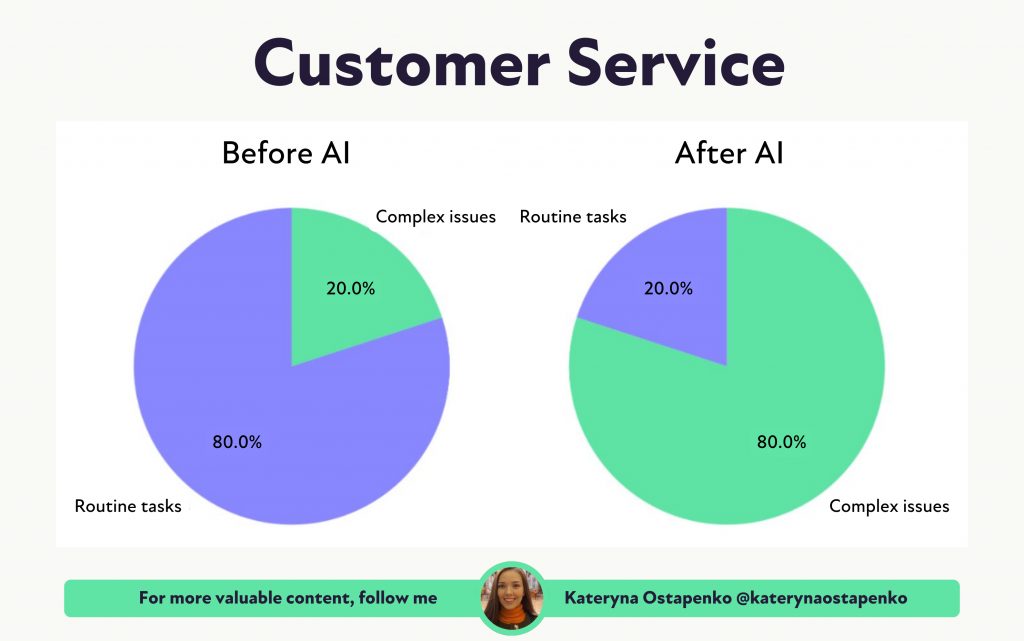Kateryna Ostapenko
As BLEND’s Director of Customer Services, Kateryna is an expert in leading efficient and effective customer support processes that result in happier customers and higher revenues for global companies.


In the online age, it’s easier than ever for companies to become global enterprises. However, no matter how firmly entrenched you are in a particular market, customer support can make or break your operation. Customer support comes in a variety of forms, including automatic responses, live chat agents, and vast knowledge bases packed with rich content. However, as brands go global, customer support content rarely gets the attention it deserves.
Cutting corners with multilingual customer support is a quickfire way of sending your localization efforts into a tailspin. Quality content that resonates with native speakers matters, whether that’s product copy or a self-serve option like a handy FAQ page. The more you invest in multilingual support solutions, the more loyalty you inspire in your customers, securing higher revenues, bigger profit margins, and a healthier market share. Looking to learn more about multilingual customer support? There are a wealth of tools and technologies out there that can help streamline the process. Below, we’ll take a closer look at them.
Thinking about improving your multilingual support options? There are many tools you can leverage to make your offering more competitive. Below, we’ll take a look at some of the best tools for multilingual support you can put to use today.
Chatbots allow for automatic responses to common customer queries. Real-time translation can also be used to allow for tailored responses to specific questions. By making your chatbots multilingual, you’re ensuring every customer gets the information they need. What’s more, by automating this basic process, customers don’t have to wait around for a human agent to become available.
Sometimes, a chatbot alone isn’t enough to field questions your customers might have. In these instances, a human agent is required. Make sure you’re offering multilingual live chat functionality as standard, with a ready supply of chat agents available.
Whether it’s basic translation tools or more advanced solutions, make sure you have all the localization software you need to adapt your content.
If you want to deliver bespoke service to every customer, a customer relationship management (CRM) system is essential. CRM systems are essential for sales management and can provide invaluable insights. For maximum mobility, go with cloud-based solutions that can be accessed from anywhere and look for tools that foster clear lines of communication between team members.
Sometimes, customers need more than a simple response to a common query. If you don’t have the resources to offer live chat functionality manned by human agents, think about upscaling your FAQ section instead. Ideal if you’re looking to make your customer support offering more self-serve, knowledge bases can be beefed up with the insights your customers need to resolve problems they’re having.
Along with multilingual customer support tools, you’ll need to ensure that the technologies powering those solutions are fit for purpose. From speech recognition to machine learning algorithms, a wealth of technologies make multilingual customer support possible. Below, we’ll take a closer look at just a few of them.

By embracing AI-enabled translations and automation, localization projects can be sped up considerably. However, they can also be utilized to deliver real-time translations to a host of queries. Increasingly reliable and ideal if you’re looking to scale multilingual customer support, AI-powered translations negate the need for large teams of human agents and can overcome the challenge of recruiting agents speaking poorly-served languages.
Around half of adults worldwide use voice search, with around 1 billion voice searches made every month. It’s particularly popular on mobile devices, with more than a quarter of mobile users using voice search functionality on their devices. As consumer appetite for voice search continues to rise, it makes sense to ensure that your customer support enables voice input.
However, voice-compatible customer support is only useful if you’re using reliable speech recognition technology. Accents can vary wildly, even among user groups speaking the same language. Slang and colloquialisms may also be preferred by some users, which can complicate matters for AI ill-prepared for culturally-nuanced and complex language. To ensure you’re accommodating as many users as possible, you’ll need a reliable multilingual automatic speech recognition (ASR) solution that can accurately transcribe vocal input in multiple languages.
Machine learning plays a vital role in delivering high standards of customer service. Automated data analysis powered by machine learning allows companies to leverage customer feedback from a broad set of data sources, including surveys and comments.
In the case of customer support, machine learning can be used to instantly identify the chosen language of a particular user, based on their question alone. Once this has been established, machine learning platforms can automatically generate a response in the customer’s preferred language, enhancing the user experience.
If you’re serious about delivering superior customer support in every language, you’ll need to think carefully when selecting the right multilingual customer support tools. These tools are essential for gathering customer insights in the form of surveys and feedback forms, or improving the user experience with exhaustive knowledge base guides and self-service options.
Make sure you’re providing all the tools your customers need to get the help they need. These can include live chat functionality, a knowledge base or FAQ page, phone support channels, and more. If you’re really looking to raise the bar, you can even think about leveraging your social media platforms to offer direct messaging responses to common customer queries. However, selecting the right tools is only half the battle. To ensure maximum success, you need to consider how you’ll be implementing them.
Customer support content, whether that’s common email responses or in-depth FAQ sections, is often considered an afterthought during the localization process. While marketing collateral and product copy receive priority, this equally vital content gets left by the wayside. The number of words contained in your support content may surprise you, so avoid any nasty surprises by carrying out an audit before you start planning localization budgets and timelines.
There’s no point shelling out for multilingual customer support tools if your teams don’t know how to use them. Opt for solutions with low learning curves if possible to streamline the onboarding process. If you’re dealing with more complex systems, ensure you’ve got at least one expert user on staff before rolling them out and invest in training materials so that everyone else can get caught up.
Multilingual customer support tools can help you hit the right note in every language, but they’re far from perfect. Sometimes, chatbot responses and FAQ answers aren’t sufficient to provide customers with the help they need. In these cases, only a human agent will do. Experienced native speakers should sit alongside your tool suite, ensuring no customer is ever left hanging.
Translating customer support is both time-consuming and expensive. If you’re fast approaching a deadline or dealing with a limited budget, it might be time to tap into the power of automation. Machine translation is an effective choice for handling large volumes of simple content, especially if there’s a relatively low return on investment. This leaves plenty of resources available to handle more nuanced content that really needs the insights of an experienced linguist and native speaker.
Many companies offer multilingual customer support, but only a relatively small number of them do it well. Putting a premium on multilingual customer support can build trust and foster loyalty, generating invaluable word-of-mouth marketing. It also offers up a goldmine of customer feedback, which is essential if you’re navigating new markets and are largely unfamiliar with native audiences. Below, we’ll explore some of the companies who’ve nailed multilingual customer support in recent years.
Whether you’re selling or buying, Amazon provides useful multilingual support under the banner of Amazon Comprehend. A natural language processing (NLP) service, Amazon Comprehend allows companies to mine a variety of data sources for insights, including social media feeds, support tickets, and other documents.
To put it simply, Amazon exceeds when it comes to multilingual support. Operating in dozens of countries, the online marketplace supports a host of languages, including German, French, Italian, Chinese, and Japanese. However, it goes the extra mile in delivering high-value customer support content to native speakers. The company recognizes the importance of offering support channels in native languages and dialects. In India for example, Amazon content can be translated into Marathi, Tamil, Kannada, as well as Hindi.
Few companies keep an eye on what their customers are doing more than Uber. In most corners of the world, Uber is primarily a cab booking service. Elsewhere, however, people get from A to B a little differently. Recognizing a need for alternatives, Uber launched a service called UberBOAT in Egypt in 2017.
Uber also took note of customer insights in North America. Back in 2016, Uber noticed a significant proportion of users in Toronto were using the Chinese-language version of the app. Realizing a need for local language support, Uber upscaled its localization efforts, eventually releasing a dedicated app, UberCHINESE. As well as offering more customer support in Mandarin Chinese, the company even went to the effort of recruiting more Mandarin speakers to its driver pool.
Going above and beyond with multilingual customer support is a surefire way to secure brand loyalty with native speakers. Admittedly, localizing customer support across every channel isn’t easy, but you can simplify the process by utilizing the best multilingual tools and technologies.
Automation can be used to replace many manual translation tasks, freeing up your teams for more important projects. Want to appeal to the growing number of web users who turn to voice search as their first port of call? Advanced speech recognition technologies are the only way to ensure that voice-compatible customer support is as reliable as possible.
Having a great toolset at your disposal is all well and good, but implementing these tools effectively is a different matter entirely. Ensure you’re picking user-friendly solutions with minimal learning curves, are confident that your teams know how to use them, and are complementing multilingual customer tools with human agents speaking the native tongue of your customers.
Ready to overhaul your customer support content and boost brand loyalty? BLEND can help. We work with thousands of professional linguists, providing translation services in more than 120 languages. Perfect if you’re planning on expanding into new territories and want to ensure your customer support content is multilingual marvel, rather than middle of the road. Keen to discover more about how BLEND can help you? Get in touch with the team today.
What our customers are saying